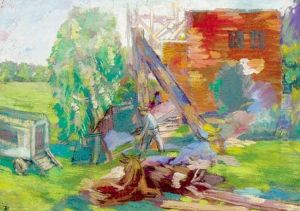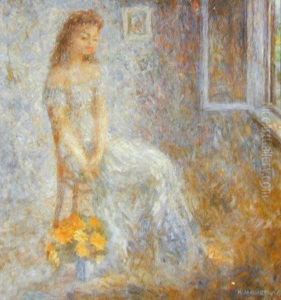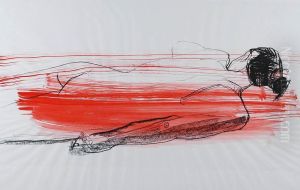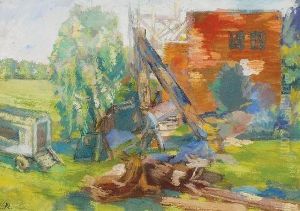Jerzy Makarewicz Paintings
Jerzy Makarewicz was a Polish artist, known for his work in painting and graphic arts. Born on June 10, 1917, in Lviv (then in Poland, now in Ukraine), Makarewicz grew up in an era marked by significant political and social changes, which influenced his early interests and later works. He pursued his education in art at the Academy of Fine Arts in Kraków, where he studied under eminent professors such as Fryderyk Pautsch and Władysław Jarocki. His education was interrupted by World War II, but he resumed his studies and artistic practice after the war, completing his education in the late 1940s.
Makarewicz's artistic career was characterized by a deep exploration of various mediums, including oil painting, watercolor, and graphic arts. His works often reflected a fascination with the natural world, human figures, and the exploration of light and shadow, which he rendered with a delicate and nuanced touch. In the 1950s and 1960s, Makarewicz became associated with several important art movements in Poland, contributing to the post-war revival of Polish art. His art was exhibited in numerous solo and group exhibitions both in Poland and abroad, gaining him international recognition.
Besides his artistic pursuits, Makarewicz was also dedicated to teaching, influencing generations of artists as a professor at his alma mater, the Academy of Fine Arts in Kraków. His approach to teaching was marked by encouraging creativity and individual expression among his students.
Makarewicz's contributions to Polish art were recognized with several prestigious awards and honors throughout his lifetime. Despite the challenges posed by the political climate in Poland, particularly during the Communist era, he managed to maintain a distinctive voice that resonated with both Polish and international audiences.
Jerzy Makarewicz passed away on August 27, 1997, leaving behind a rich legacy of artistic achievements and a significant impact on the Polish art scene. His works continue to be celebrated for their technical mastery and emotional depth, and they are held in numerous public and private collections worldwide.




